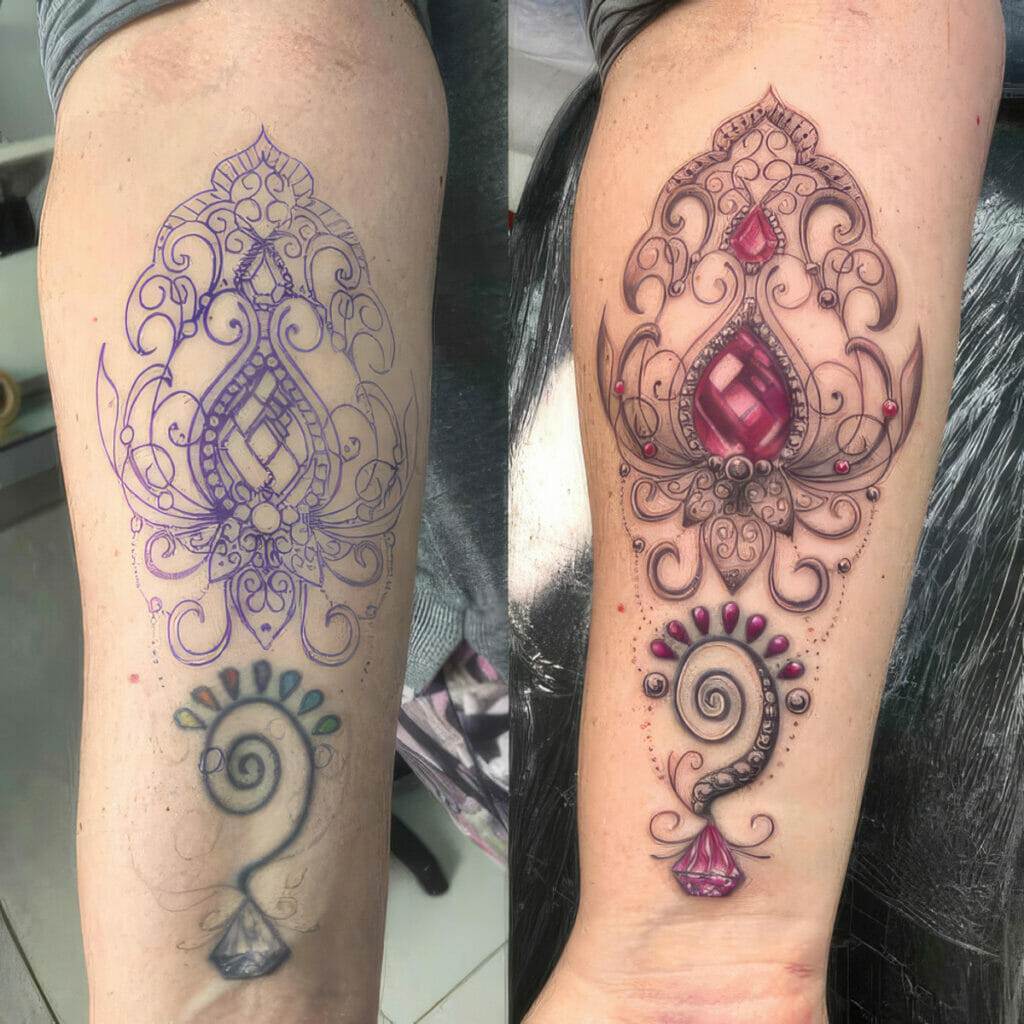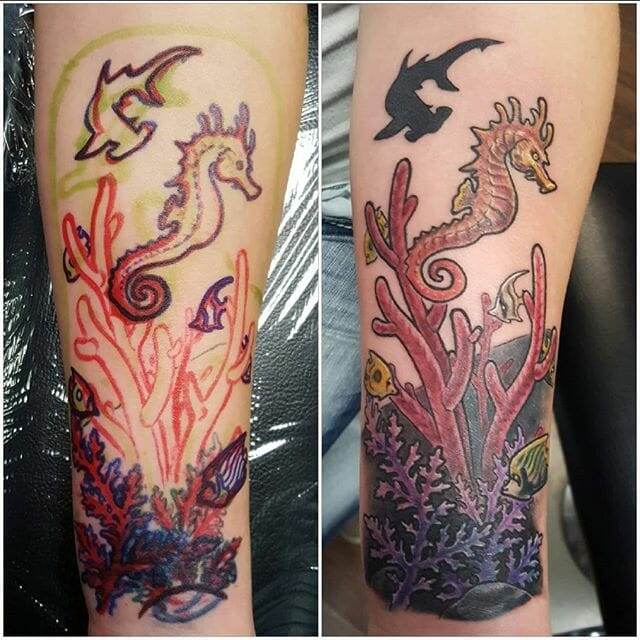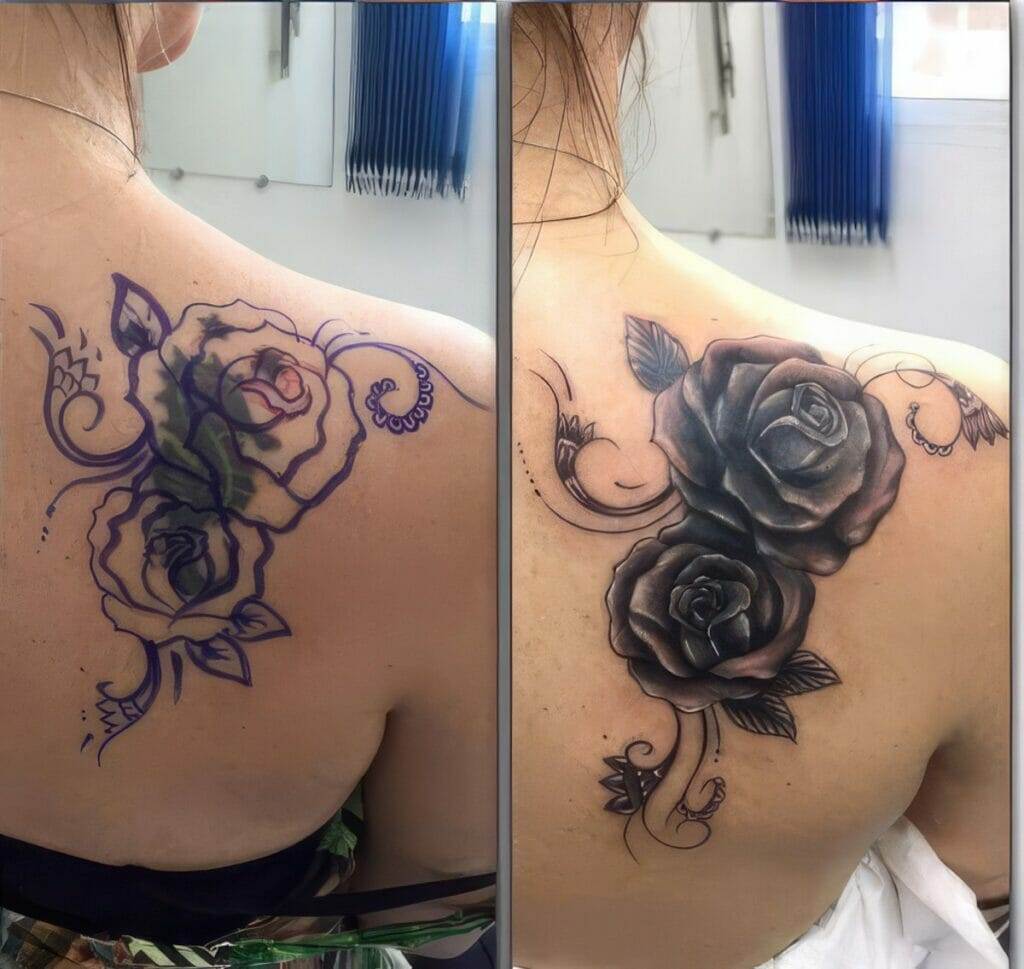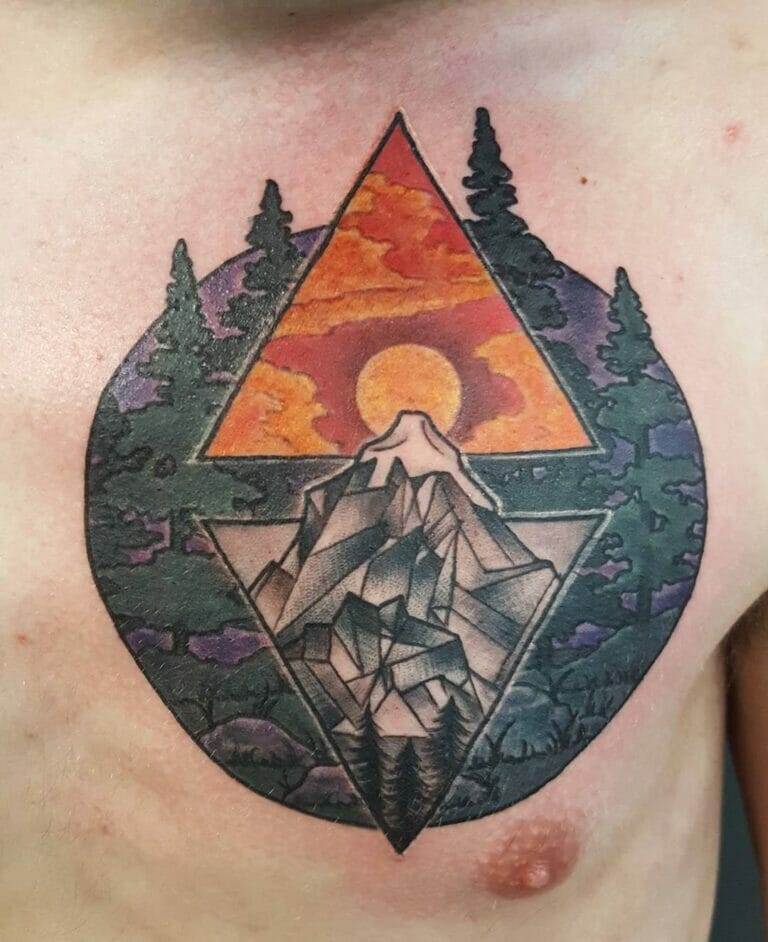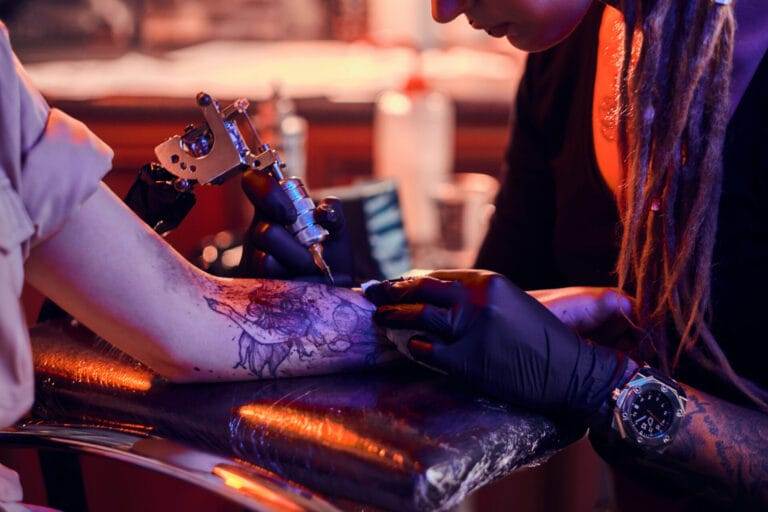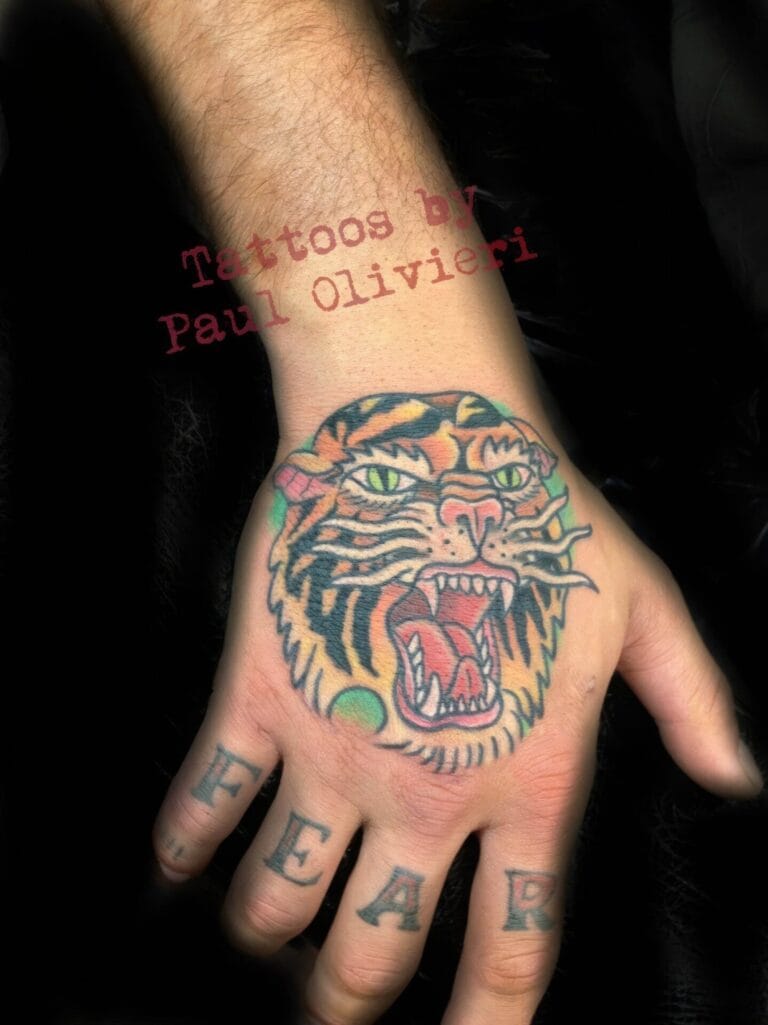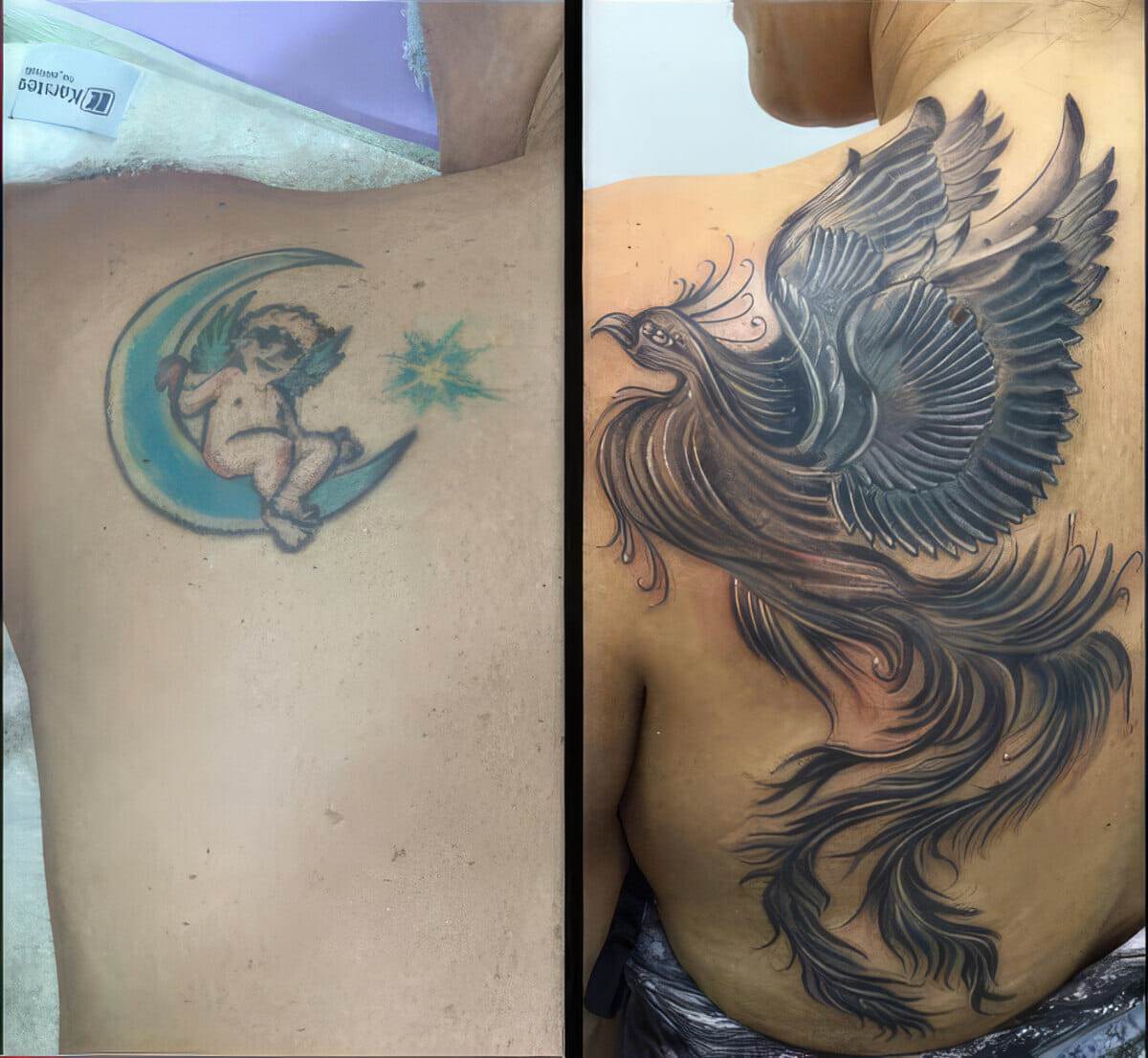
The popularity of cover-up tattoos
Cover-up tattoos have become increasingly popular in recent years as more and more people are looking for ways to transform or conceal their unwanted tattoos. Whether it’s a regrettable ex’s name, a poorly done design, or simply a tattoo that no longer represents who they are, cover-up tattoos offer a solution for individuals who want to start fresh with a new piece of artwork.
The art of transforming unwanted tattoos
The process of transforming unwanted tattoos into new, unique designs is no easy feat. It takes skill, creativity, and an understanding of color theory, shading, and placement. Tattoo artists who specialize in cover-up work have the ability to carefully analyze the existing tattoo and come up with a design that not only covers it up but also incorporates it into the new piece. This requires a keen eye for detail and a deep understanding of how to work with different styles and elements.
There are several techniques that artists use to cover up tattoos effectively. One common method is using darker ink or thicker lines to create a new design that effectively hides the old one. Another approach is incorporating elements like flowers, skulls, or geometric shapes to blend the old tattoo into the new design. Additionally, artists may also use techniques like negative space or adding shading to create the illusion of depth and texture, further enhancing the cover-up.
Overall, the art of transforming unwanted tattoos into fresh, new designs is a testament to the skill and creativity of tattoo artists. With their expertise, individuals can leave their past tattoo regrets behind and proudly wear a new piece of art that represents who they are now.
Understanding Cover-Up Tattoos
What are cover-up tattoos?
Cover-up tattoos have gained significant popularity in recent years as individuals seek ways to transform or conceal unwanted tattoos. These tattoos provide a solution for those who want to start fresh with a new piece of artwork, whether it’s a regrettable ex’s name, a poorly done design, or a tattoo that no longer reflects their current self.
Factors to consider before getting a cover-up tattoo
Before getting a cover-up tattoo, there are several factors to consider. It is essential to find an experienced tattoo artist who specializes in cover-up work, as the process requires skill, creativity, and an understanding of color theory, shading, and placement. Here are some important points to keep in mind:
- Discuss your expectations: Schedule a consultation with the tattoo artist to discuss your desired end result. Be clear about what you want to achieve with the cover-up tattoo and any specific elements or styles you would like to incorporate.
- Assess the existing tattoo: The tattoo artist will carefully examine your current tattoo to determine the best approach for the cover-up. They will consider factors such as the size, color saturation, and placement of the existing tattoo, and use their expertise to develop a design that effectively conceals it.
- Realistic expectations: While cover-up tattoos can work wonders, it’s important to have realistic expectations. Depending on the complexity of your existing tattoo and the desired design, complete removal of the original tattoo may not be possible. Discuss these limitations with your tattoo artist to ensure you understand what can be achieved.
- Patience and commitment: Cover-up tattoos may require multiple sessions to achieve the desired result. It’s important to be patient throughout the process and follow the aftercare instructions provided by your tattoo artist to ensure proper healing.
In conclusion, cover-up tattoos offer a way for individuals to transform unwanted tattoos into fresh, new designs. By considering the factors mentioned above and working with a skilled tattoo artist, individuals can leave their tattoo regrets behind and proudly wear a new piece of art that represents their current self.
Initial Consultation
Importance of discussing your expectations and concerns
During the initial consultation for a cover-up tattoo, it is crucial to have an open and honest discussion with the tattoo artist. Clearly communicate your expectations and concerns regarding the desired end result. This will help the artist understand your vision and tailor the design accordingly. Whether you want to completely transform the existing tattoo or incorporate certain elements into the new design, sharing your ideas will ensure that the cover-up tattoo reflects your desired outcome.
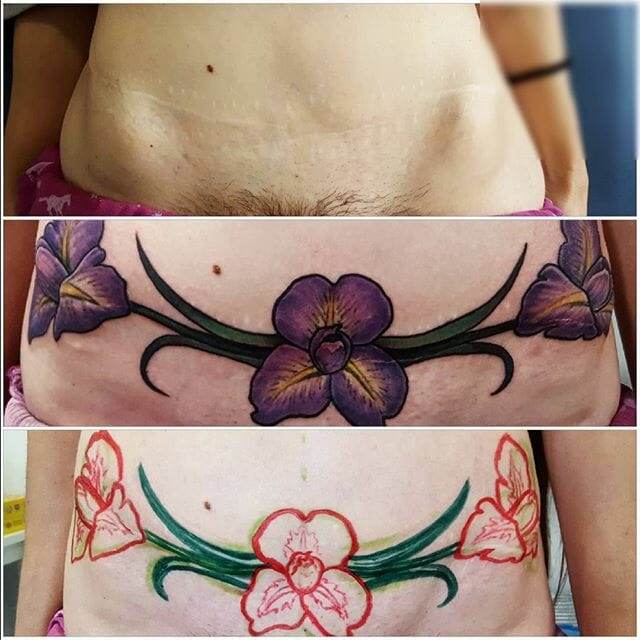
Analyzing the existing tattoo for potential cover-up options
The tattoo artist will carefully examine the existing tattoo to determine the best approach for the cover-up. Factors such as the size, color saturation, and placement of the original tattoo will be taken into consideration. Using their expertise, the artist will develop a design that effectively conceals the unwanted tattoo while creating a visually appealing cover-up. It is important to understand that complete removal of the original tattoo may not always be possible, especially if it is large or heavily pigmented. However, an experienced tattoo artist will work closely with you to come up with a cover-up design that minimizes the visibility of the old tattoo.
In conclusion, the initial consultation plays a crucial role in the cover-up tattoo process. By openly discussing your expectations and concerns, you ensure that the final result aligns with your vision. Additionally, analyzing the existing tattoo helps the artist determine the best approach for effectively concealing it. With proper communication and collaboration between you and the tattoo artist, you can achieve a cover-up tattoo that allows you to proudly wear a fresh piece of art that represents your current self.
Designing the Cover-Up Tattoo
Collaborating with the tattoo artist to create a custom design
During the cover-up tattoo process, it is important to collaborate closely with the tattoo artist to create a customized design that meets your expectations. The artist will take into account your input, preferences, and style to develop a unique cover-up tattoo. They will use their expertise to suggest design ideas and guide you in making decisions that will result in a visually appealing final product.
Incorporating elements that effectively conceal the old tattoo
The cover-up tattoo should effectively conceal the old tattoo, making it less visible or completely disguising it. This can be achieved by incorporating specific elements or techniques that help to distract the eye from the original tattoo. The tattoo artist will utilize various shading techniques, colors, and patterns to create a design that strategically hides the old tattoo while creating a cohesive and aesthetically pleasing new tattoo.
By collaborating with the tattoo artist and sharing your vision, a cover-up tattoo can be designed in a way that meets your desires while effectively concealing the old tattoo. It is important to trust the expertise of the artist and be open to their suggestions and recommendations. With proper planning and communication, you can achieve a cover-up tattoo that transforms an unwanted tattoo into a beautiful piece of artwork that you can proudly display.
Tattoo Removal or Lightening Techniques
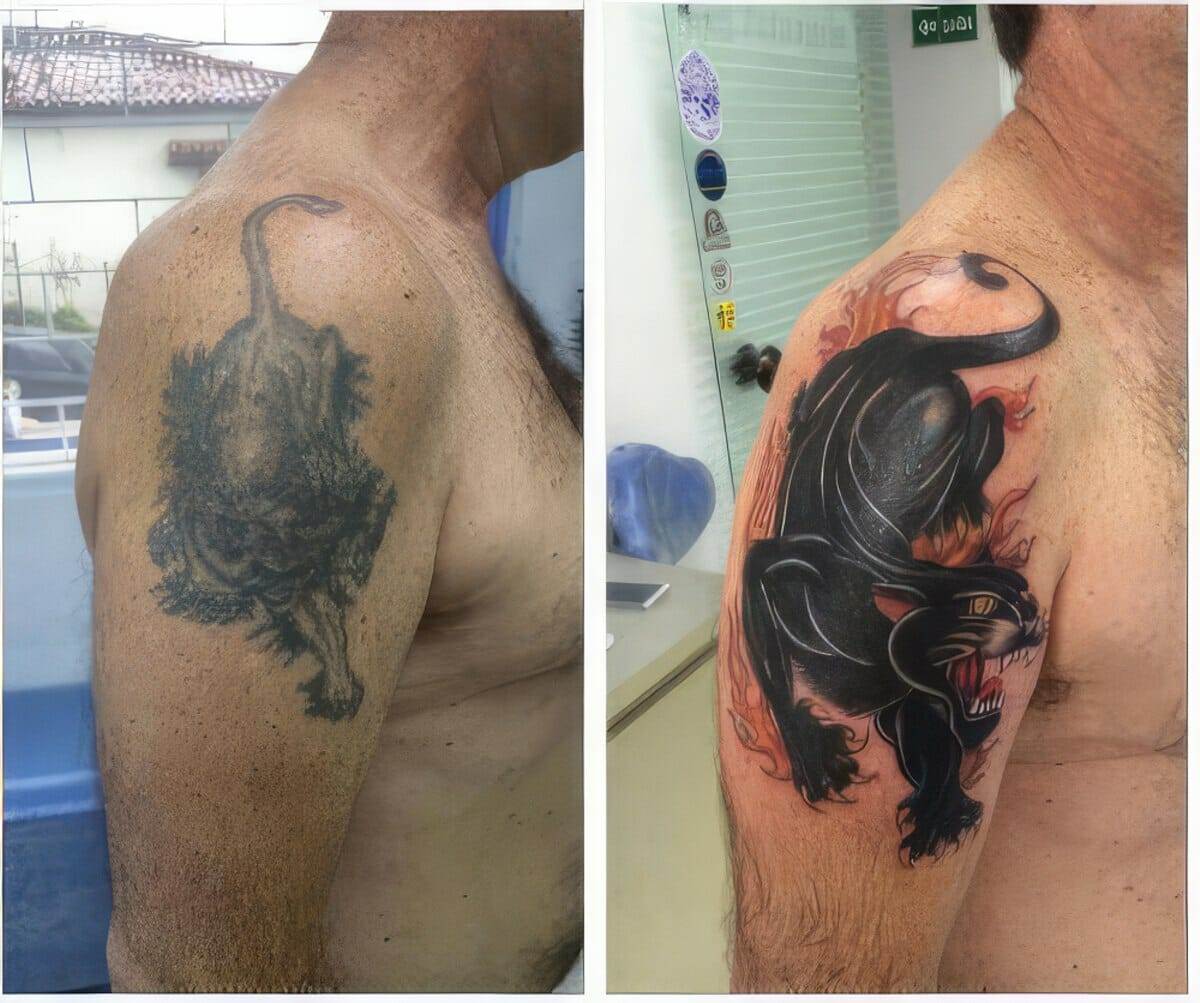
When is tattoo removal or lightening necessary?
Tattoo removal or lightening may be necessary in certain circumstances, such as when you no longer want a tattoo, the tattoo has faded or changed over time, or you want to make modifications to an existing tattoo. Additionally, if you’re planning for a cover-up tattoo but the existing tattoo is too dark or contains certain colors that may interfere with the new design, tattoo removal or lightening may be recommended. It’s important to consult with a professional tattoo artist or a dermatologist to determine if tattoo removal or lightening is the best course of action for your specific circumstances.
Exploring different removal options such as laser or lightening creams
There are various options available for tattoo removal or lightening, including laser treatments and lightening creams. Laser tattoo removal is a popular and effective method that uses laser technology to break down the tattoo ink pigments, allowing the body’s natural processes to gradually remove the ink. This technique is often preferred for larger or more complex tattoos.
Lightening creams, on the other hand, work by bleaching the tattoo and gradually lightening it over time. These creams typically contain ingredients such as hydroquinone or alpha arbutin, which help to fade the tattoo. Lightening creams are more suitable for smaller and less intricate tattoos.
It is important to note that tattoo removal or lightening is a gradual process that may require multiple sessions or applications. It is also important to follow proper aftercare instructions to aid in the healing process and minimize any potential side effects.
Before deciding on a specific tattoo removal or lightening technique, it is advisable to consult with a professional tattoo artist or a dermatologist who can assess your specific tattoo and recommend the most appropriate method for achieving your desired results.

